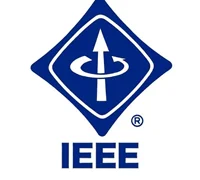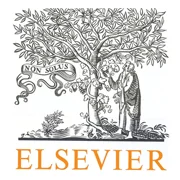دانلود ترجمه مقاله مدیریت بار اکتیو در ساختمان هوشمند با استراتژی کنترل پیش بین
| عنوان فارسی |
مدیریت بار اکتیو در ساختمان هوشمند با استفاده از استراتژی کنترل پیش بین |
| عنوان انگلیسی |
Active load management in an intelligent building using model predictive control strategy |
| کلمات کلیدی : |
مدیریت بار اکتیو؛ سیستم توان پراکنده (توزیع شده)، مصرف انعطاف پذیر؛ کنترل پیش بینی؛ نفوذ توان بادی |
| درسهای مرتبط | شبکه هوشمند |
| تعداد صفحات مقاله انگلیسی : 6 | نشریه : IEEE |
| سال انتشار : 2011 | تعداد رفرنس مقاله : 13 |
| فرمت مقاله انگلیسی : PDF | نوع مقاله : ISI |
|
پاورپوینت :
ندارد سفارش پاورپوینت این مقاله |
وضعیت ترجمه مقاله : انجام شده و با خرید بسته می توانید فایل ترجمه را دانلود کنید |
1. مقدمه 2. تشریح تاسیسات آزمایشی SYSLAB 3. کنترل کننده MPC برای تغییر بار در استراتژی گرمایش PowerFlexHouse 4. نتایج 5. نتیجه گیری

چکیده – در این مقاله PowerFlexHOuse معرفی می شود که یک وسیله تحقیقاتی برای بررسی پتانسیل فنی مدیریت بار اکتیو در سیستم توان توزیع شده یا پراکنده (SYSLAB) با نفوذ بالای انرژی تجدیدپذیر است و جزئیات مربوط به پیاده سازی کنترل کننده پیش بین گرمایی برای تغییر بار در طرح مصرف توان گرمکن های PowerFlexHouse ارائه می شود. با این بررسی کنترل طرف تقاضا، انتظار می رود هنگامی که نفوذ منابع انرژی موقتی در سیستم توان بالاست، این روش پاسخ به تقاضا بتواند کارآیی انرژی را در حد قابل توجهی افزایش دهد و قابلیت اطمینان شبکه را دربهبود دهد. مقدمه: طبق Energinet.dk، نیروی بادی 50% مصرف برق دانمارک را پوشش می دهد [1]، و دولت دانمارک هدف طولانی مدت خود را تامین انرژی دانمارک تا سال 2050 بر اساس 100% انرژی های تجدید پذیر حاصل از ترکیبی از انرژی باد، زیست توده، امواج و انرژی خورشیدی اعلام کرده است [2]. با این حال چون بیشتر منابغ انرژی تجدیدپذیر برای برق متناوب و موقتی هستند، کمک آنها به شبکه برق نیز محدود است، مگر اینکه شبکه انعطاف پذیری کافی برای جذب انواع انرژی را از این منابع داشته باشد. برای ادغام سهم بالایی از منابع متناوب در سیستم انرژی، بویژه تامین برق، تقاضای قوی را در جای دیگری در سیستم قرار می دهد. به طور سنتی، تولید و مصرف برق از هم تفکیک شده است: مصرف بخش منفعل سیستم نسبت به کنترل در نظر گرفته شده و در نتیجه هرگونه عدم مطابقت آن با تولید ناشی از تغییر و تفاوت در تولید انرژی های تجدید پذیر باید بوسیله واحدهای دیگر تولید توان جبران می شد. در سال های اخیر به پتانیسل بالای انعطاف پذیری بیشتر در کنترل سیستم های توان با مشارکت فعال طرف مصرف در برقراری تعادل بین عرضه و تقاضای توان پی برده اند. امروزه سیستم تولید توان بار را جاری می سازد. در سیستم انرژی هوشمند (Smart Grid)، تولید کنترل کننده مصرف است. برای مثال، وقتی باد می وزد یا خورشید می تابد، میزان مصرف به صورت اتوماتیک تنظیم می شود و مصرف و مصرف کننده از شرکت کننده منفعل به عاملی فعال در سیستم برق تبدیل می شود.
This paper introduces PowerFlexHouse, a research facility for exploring the technical potential of active load management in a distributed power system (SYSLAB) with a high penetration of renewable energy and presents in detail on how to implement a thermal model predictive controller for load shifting in PowerFlexHouse heaters' power consumption scheme. With this demand side control study, it is expected that this method of demand response can dramatically raise energy efficiencies and improve grid reliability, when there is a high penetration of intermittent energy resources in the power system. INTRODUCTION: Wind power will cover 50% of the Danish electricity consumption in 2025 according to Energinet.dk [1], and the Danish government has expressed a long term target of achieving a Danish energy supply based on 100% renewable energy from combinations of wind, biomass, wave and solar power in 2050 [2]. However, as most of the renewable sources of electricity are intermittent, their contribution to the grid is limited, unless the grid is flexible enough to absorb the variations from these sources. To integrate such a high share of intermittent resources into the energy system, especially the electricity supply, it places strong demands on flexibility elsewhere in the system. Traditionally, there has been a separation between the production and consumption of electricity: Consumption has been regarded a passive part of the system with respect to control, and therefore any generation mismatch caused by variations in renewable energy production has had to be compensated by other generating units. In recent years, it has been realized that there is a large potential for additional flexibility in the control of power systems by enabling the active participation of the consumption side in the balancing of power supply and demand. Nowadays the production of electricity system follows the load. In the intelligent energy system (Smart Grid) the production controls the consumption. For example, when the wind blows or the sun shines, consumption will automatically be adjusted, and consumption and consumers will go from being passive participants to be active players in the electricity system.
محتوی بسته دانلودی:
PDF مقاله انگلیسی ورد (WORD) ترجمه مقاله به صورت کاملا مرتب (ترجمه شکل ها و جداول به صورت کاملا مرتب)


دیدگاهها
هیچ دیدگاهی برای این محصول نوشته نشده است.